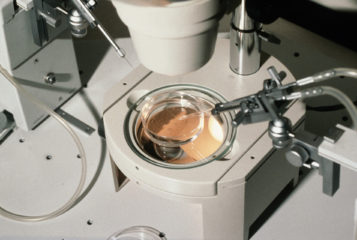Amid international debate on mitochondrial donation, Singapore's Bioethics Advisory Committee has prompted much discussion nationally over the issue. It has recently opened public consultation on the ethical, social and legal aspects of this innovative intervention.
The consultation is mainly intended to inform mitochondrial donation policy in Singapore. But this is an apt occasion to reflect on one of the central questions about these techniques that is relevant around the world: whether it's worthwhile as a society to permit it.
Briefly, mitochondrial donation is a form of IVF that uses the nuclear DNA from two intended parents, along with the mitochondrial DNA of a third woman. This may be used to prevent transmission of certain rare inherited mitochondrial diseases, or as an unorthodox fertility treatment for certain couples for whom traditional IVF has not worked. Notably, at least two children have already been born using the controversial technique (in Mexico and Ukraine), with more expected in the UK under a regulated licensing regime.
Various ethical challenges have been mounted against mitochondrial donation. One is a concern about children having an unnatural genetic relationship with three parents. However, here I will focus on a different issue: whether mitochondrial donation poses more risks and costs to individuals and society than benefits.
Potential risks of mitochondrial donation to the resultant child have been highlighted by some commentators. Perhaps the most prominent being that some faulty mitochondria might nevertheless be passed on to children by mothers who have mitochondrial disease.
At the societal level, developing a responsible regulatory regime like the UK's requires substantial administrative resources. Fertility clinics adopting the practice will have to draw on public resources both directly and indirectly. And a more subtle potential cost is that some couples affected by mitochondrial disease may take advantage of the technique instead of adopting a child, making it more difficult to meet the great need for families willing to adopt children.
Of course, the risk profile of any new biomedical treatment is inevitably uncertain and requires social investment to get off the ground. We accept those costs on the grounds that the benefits – such as the treatment of an otherwise devastating disease – are worthwhile.
But mitochondrial donation is arguably somewhat different. In the case of mitochondrial disease, this technique does not involve curing an existing person of a disease, but rather bringing someone into existence without that disease.
Couples who might take advantage of mitochondrial donation to have children currently have access to alternatives with much lower risks and costs. They could adopt, as noted above. Or they could use a donor egg and the intended father's sperm, with proven traditional IVF techniques. So what extra value does mitochondrial donation add that could justify the risks and costs?
The answer seems to be: it allows some women to have a healthy child to whom they are genetically related. An adoptive child is genetically related to neither adoptive parent, and using a donor egg will mean the child is only related to the father. But a child conceived using mitochondrial donation will have the combined nuclear DNA of the intended mother and father, with only the mitochondrial DNA (which makes up a very small proportion of the overall genome) from a third individual.
The value of genetic relatedness has been substantially critiqued by some philosophers. Indeed, it is difficult to offer a thorough explanation of why exactly genetic relatedness matters to some people, and it is impossible to even attempt it in this brief commentary. There may be explanations from evolutionary biology or social history, but we may be sceptical that such contingent facts could ground a moral value substantial enough to outweigh the real risks and costs of mitochondrial donation.
Still, it is undeniable that many societies around the world place significant weight on genetic relatedness. Singapore is no exception: a recent high court case awarded substantial damages for the loss of 'genetic affinity' after a fertility clinic mixed up sperm samples, resulting in a child related to a third party donor instead of the intended father. And the plot of a currently airing drama on local TV here in Singapore, 'Babies on Board', revolves around a woman with fertility difficulties seeking a surrogate (currently illegal in Singapore) to carry her child to term. The main character's desperation for her own child is not portrayed as strange or aberrant – but that leaves open the question of whether the means of surrogacy is acceptable to achieve that end.
Similarly, establishing the value of genetic relatedness wouldn't settle the question of whether Singapore should join the UK in permitting mitochondrial donation under regulated circumstances. There would still need to be a careful judgment of whether that value is weighty enough to justify the risks and costs. I have argued elsewhere that the value is plausibly strong enough to ground a procreative right to access mitochondrial donation. But this is a question that Singaporeans must now consider for themselves, as the Bioethics Advisory Committee carries out its consultation and considers its recommendations.
The views and opinions expressed herein are those of the author and do not represent the views and opinions of the National University of Singapore or any of its subsidiaries or affiliates.





Leave a Reply
You must be logged in to post a comment.